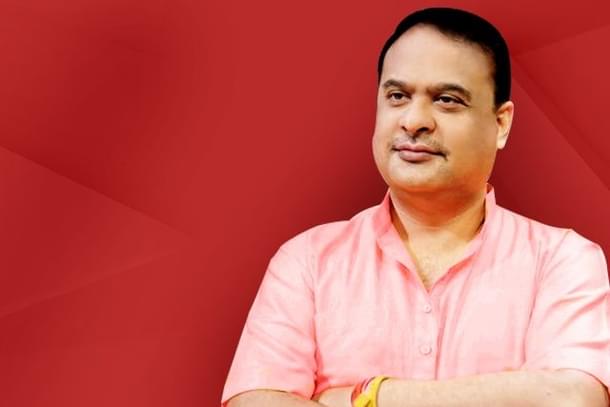Politics
This Is How Assam Chief Minister Himanta Biswa Sarma Is Resolving Decades-Old Inter-State Boundary Disputes
Jaideep Mazumdar
Jan 27, 2022, 06:03 PM | Updated 06:03 PM IST
Save & read from anywhere!
Bookmark stories for easy access on any device or the Swarajya app.


Assam Chief Minister and the BJP’s North-East strongman Himanta Biswa Sarma is set to achieve what successive Congress governments at the Centre, and in Assam as well as its neighbouring states, have failed miserably in the past few decades: resolving the acrimonious inter-state border disputes.
When Nagaland, Mizoram, Meghalaya and (parts of) Arunachal Pradesh were carved out of Assam, the Union government carried out a very shoddy job of marking out the inter-state boundaries only on maps.
Nagaland was carved out of Assam in 1963, with Meghalaya and Mizoram having been created in 1972 and parts of Assam added to the erstwhile North-East Frontier Agency (NEFA) which became a state in 1987.
In the run-up to the creation of these states, the Union government (three generations of the Nehru-Gandhi dynasty helmed the Union governments at the time of creation of these states) ought to have ensured that the borders of the new states are demarcated on the ground.
But this vital task was ignored and that opened the doors for bitter boundary disputes between Assam and its neighbours. While Assam interpreted the demarcation on the map on its own terms, the neighbouring states viewed the border on the ground very differently.
This has resulted in Assam and its neighbours making claims and counterclaims over nearly 500 square kilometres of land along the inter-state borders. The border disputes have often resulted in violent clashes that have resulted in loss of hundreds of lives.
Police forces of Assam have often clashed with their counterparts in Nagaland, Meghalaya and Mizoram, shots have been fired and many killed while asserting control over these disputed areas. The latest such violent clash that took place in July last year resulted in six Assam cops being killed in firing by Mizoram police.
The most violent and frequent clashes have taken place in the disputed areas along the 512-kilometre-long Assam-Nagaland border. The first major one in June 1968 resulted in more than 150 deaths, another in 1979 resulted in 54 deaths and displacement of thousands from the border areas and yet another major clash in 1985 led to 41 casualties, including 28 Assam Police personnel. The last major clash reported in 2014 caused the loss of 17 lives and displaced an estimated 10,000 people.
Assam and Meghalaya lay conflicting claims at 12 places along the 885 kilometre-long inter-state boundary and confrontations between villagers, as well as police forces and officials of the two states, have often been reported.
Assam and Arunachal Pradesh are also locked in disputes over as many as 1,200 places along the 804-km boundary between the two states.
Successive governments in these Northeastern states — and the Congress was in power in these states for most of the time since their creation — did little to seriously resolve the boundary disputes.
The border disputes that Assam has with Nagaland and Arunachal Pradesh have reached the Supreme Court.
Over the decades, committees and commissions have been appointed to resolve the disputes, but little headway has been made.
“That’s because of immaturity on the part of people on both sides,” said Assam Chief Minister Himanta Biswa Sarma. “Till now, each side was only focused on strengthening its own claim on the disputed areas by marshalling old records, reinforcing its physical presence in these areas by building structures, utilities and posting police forces there, and by trying to win over local residents to their respective sides,” said Sarma.
But such moves did little to inspire trust and confidence between the two sides and, in fact, deepened the inter-state divide. Also, the border disputes triggered competitive jingoism between the two sides and that also resulted in a hardening of positions.
“On the face of it, the border disputes seemed intractable. The approaches of all sides were rigid and things seemed to have got stuck with all sides only reiterating their positions during the many meetings to resolve the disputes,” said Sarma.
Hence, he decided to try an altogether new approach. “I decided to adopt a policy of flexibility and approach the other sides in a spirit of ‘give and take’. I realised that talks to resolve the disputes would go on endlessly and take up a huge lot of our time and energy if all we do is reiterate on respective claims on the disputed areas,” explained Sarma.
When Sarma suggested this approach to his Meghalaya counterpart, Conrad Sangma, the latter promptly agreed. “Efforts to resolve the border dispute with Assam were stuck in rigidity and a tunnel-visioned approach. So we decided to adopt a new approach in a cooperative spirit of give and take,” said Sangma.
The first step in that direction was formation of three inter-state committees co-chaired by senior ministers from both sides. These committees also comprised officials and representatives of the disputed areas. Of the 12 disputed areas along the Assam-Meghalaya border, six areas where the disputes were less contentious were selected. “We aimed for the low-hanging fruits first,” explained Sangma.
The three committees were tasked with looking into the disputes in the Kamrup, Kamrup Metropolitan and Cachar districts of Assam and their corresponding districts in Meghalaya. The committees were asked to look into five aspects: historical facts, ethnicity of people in the disputed areas, administrative convenience, contiguity and opinions and sentiments of inhabitants of those disputed areas.
The three committees held many interactions with the inhabitants of the disputed areas, community leaders there as well as local representatives, pored over maps and old records while holding intensive discussions —often heated ones — internally.
But the spirit of ‘give and take’ ultimately prevailed and the committees submitted their recommendations to the two chief ministers a month ago. The compromise formula involved settling the disputes in the six areas permanently by apportioning some portions of the areas to Assam and the rest to Meghalaya.
Accordingly, of the 36.79 square kilometre of disputed land in these six areas, Meghalaya would get 18.28 square kilometres while Assam would keep 18.51 square kilometres.
The two chief ministers presented the agreement to Union Home Minister Amit Shah in New Delhi last week. The ball, said Chief Minister Sarma, is now in Shah’s court since the Union government has to put its seal of approval on the agreement for its implementation on the ground.
The two states will form similar committees to resolve the disputes in the six remaining areas. “The resolution of the disputes in the six areas will boost the process of resolution in the remaining areas since it will boost confidence and trust between the two sides,” said Sangma.
Sarma met his Nagaland and Arunachal counterparts earlier this week to resolve the border disputes with those states. Since title suits on the disputes are pending before the Supreme Court, the three states agreed to work out out-of-court settlements.
The three chief ministers will meet again amongst themselves, and also jointly with Amit Shah, to lay down the principles that will guide the resolution of the border disputes. The basic principle, said Himanta Biswa Sarma, will be that of ‘give and take’.
After joint ground-level surveys of the disputed areas, committees headed by ministers and comprising officials and other stakeholders from both sides will be formed to conduct hearings in the disputed areas, examine maps and records and then recommend solutions, said a senior officer of Assam.
Assam’s Border Areas Development Minister Atul Bora is in touch with Mizoram Home Minister Pu Lalchamliana to resolve the border dispute with that state. The dispute with Mizoram, say Assam government officials, will take longer to resolve since the violence that erupted along the interstate border and the killings of six Assam Police personnel is still too fresh in people’s minds.
But ultimately, that dispute will also get resolved in the same spirit of give and take. Because that is the only way forward, say the officials.
The interstate border disputes in the North-East, said Sarma, would get resolved in another two to three years. “We have to move forward as one region and regional harmony is very important. The border disputes were a constant irritant in inter-state relations and their resolution is of prime importance,” said Sarma.
Unfortunately, he said, the Congress was never serious in resolving these disputes and never invested any political capital in finding a solution to them. “The Congress benefited from keeping these disputes alive since it has always played the ‘divide and rule’ game,” he said.
Sarma’s ‘give and take’ formula, say the chief ministers of Meghalaya, Arunachal Pradesh and Nagaland, will result in the healthy and harmonious resolution of the border disputes. “This (approach) is exactly what is required for resolution of these complicated disputes,” said Arunachal Chief Minister Pema Khandu. Nagaland Chief Minister Neiphiu Rio echoed his view.
Jaideep Mazumdar is an associate editor at Swarajya.





